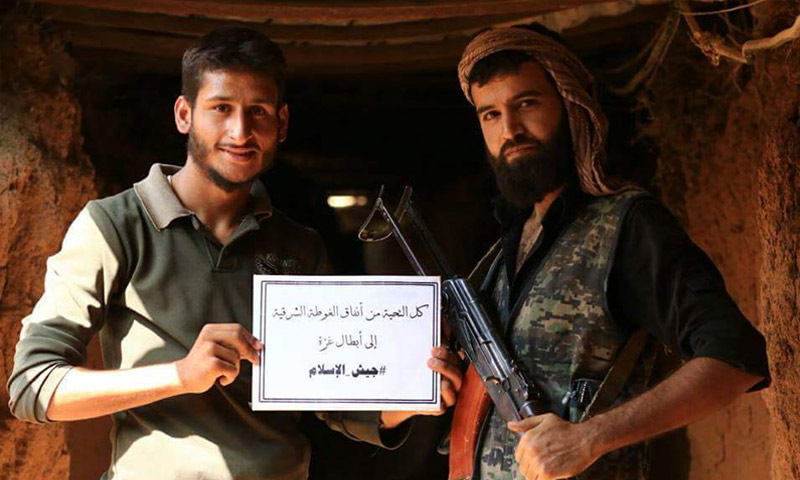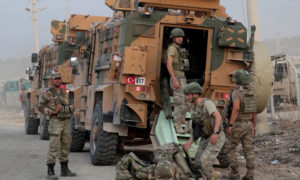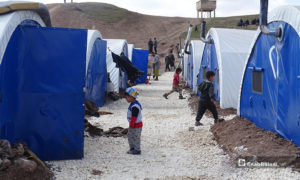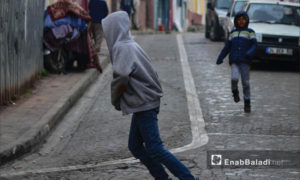
As Qaboun Awaits its Fall, Two Migrations Cross Paths in Damascus Countryside

Filled with mud and blood, single tunnel operates as only pathway for residents escaping battles on the one hand and fighters moving voluntarily toward the siege on the other
“Today we complete the final page in the revolution of the march of Qaboun, which will return to the regime, although we tried every means of withstanding them.” With these words, Dr. Nizar al-Qabbouni said goodbye to the district where he had lived for years, as he exited alongside dozens of others to opposition-held Idleb in mid-May. However, others preferred to move from one siege to another, bigger siege.
Despite the forced displacement which pushed residents to Syria’s north, some locals of the Qaboun district in Damascus preferred to head toward the Eastern Ghouta through a single tunnel, which also acted as a path for others to exit toward the Damascus neighborhood in order to escape, with their families, from the area around the capital.
The details of the agreement for the opposition to leave Qaboun are still unclear as rebel groups and the Syrian regime are yet to offer an official announcement. The number of those who left toward Idleb was about 2,000 people, including fighters and civilians from the eastern Ghouta, who had reached Qaboun through the tunnel before the Assad regime took control of it.
However, on the other side, about 200 fighters preferred to head toward the Ghouta rather than depart to Idleb province. According to Enab Baladi’s sources, most of them belonged to the Jaish al-Islam (Army of Islam) faction, in addition to some civilians who were living in the district.
Marwan al-Shami has been residing with his family in the Ghouta for five years, after relocating from Homs. He recounted a discussion between him and his wife to Enab Baladi, as he stood in front of the buses transporting people displaced from Qaboun.
“We joined the people of the Ghouta in pain and hunger and death, and a little joy. However, the pain of leaving was the biggest,” says Shami, borrowing a phrase from his wife when they decided not to leave Damascus: “Going back will save our dignity, we are returning [to the Ghouta], children.”
With Shami, some Qaboun residents have headed to the Ghouta, including the fighter Sami Abou al-Zaher, who refused to be displaced to the north, crediting this to his belief in “the duty of jihad and fighting oppression suffered at the hands of the sectarian regime,” as he put it.
The length of the tunnel between Qaboun and Arbain in the Ghouta is about 3 kilometers, and with battles ongoing nearby, services have stopped inside it as the path has become filled with mud and water, and blood from those wounded in the battles, according to what the last group to pass through the tunnel told Enab Baladi.
The fighter from Qaboun said that he had no excuse for leaving as many like him did, which encouraged him to stick with the option of heading to the Ghouta, saying that leaving to northern Syria despite the possibility of remaining was “fleeing from fighting, which God has forbidden and is one of the greatest sins.”
The road between Damascus and Idleb is a long one, but those under siege in Ghouta, the last stronghold of the opposition in the Damascus area, fear for the fate of their neighbors in Qaboun.
This article was translated and edited by The Syrian Observer. Responsibility for the information and views set out in this article lies entirely with the author.
if you think the article contain wrong information or you have additional details Send Correction
النسخة العربية من المقال
-
Follow us :

















 A
A
A
A
A
A








 More Uncategorized
More Uncategorized